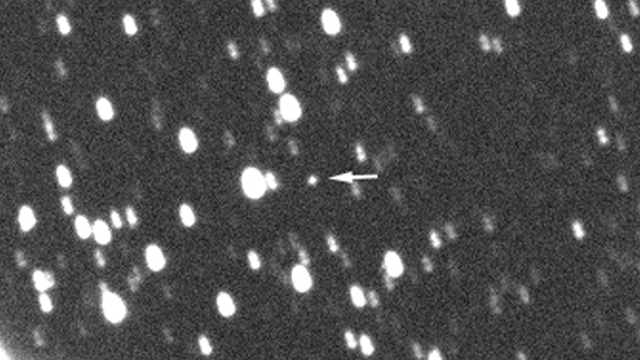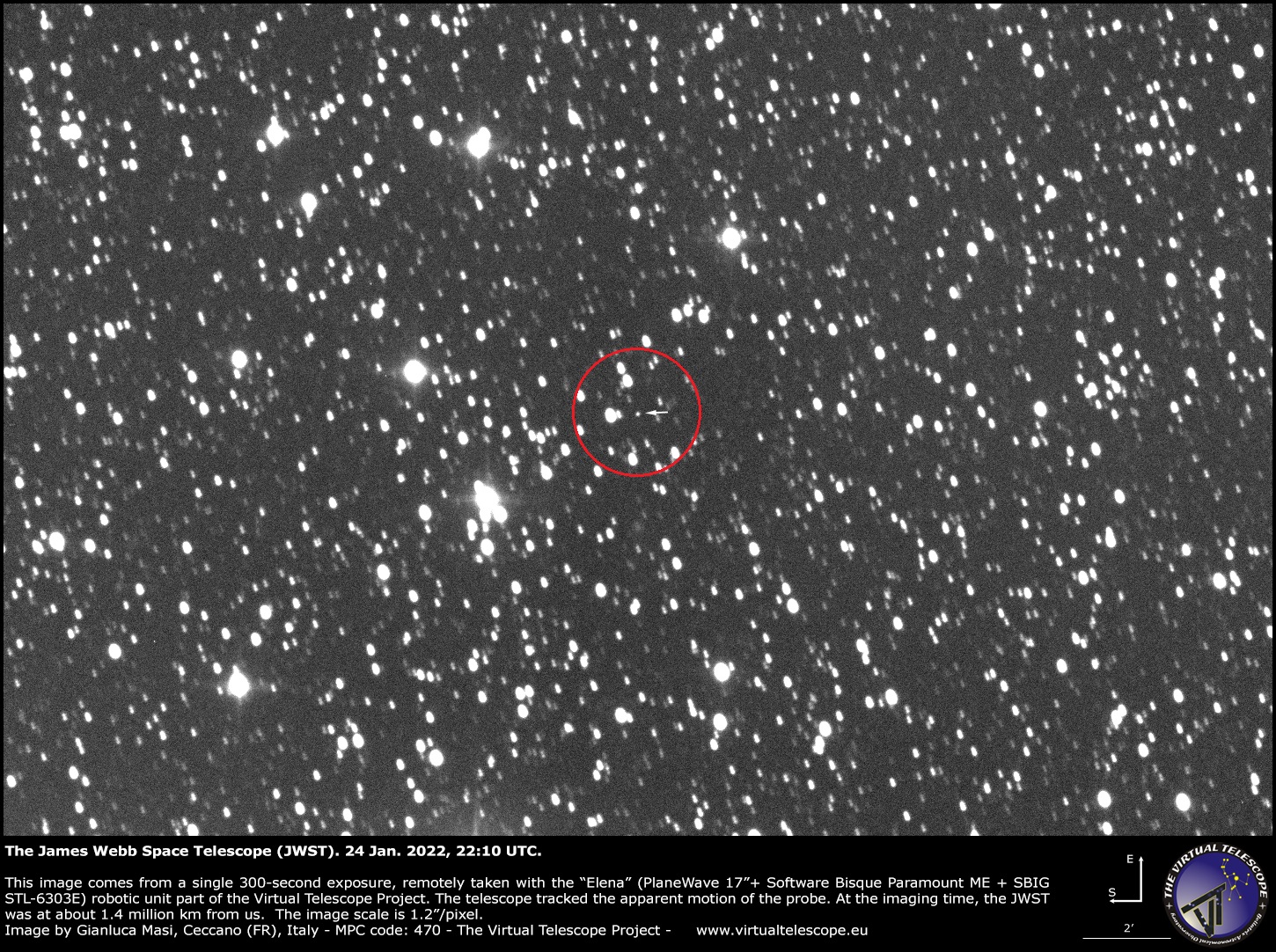Virtual Telescope Project captures a view of the James Webb Space Telescope at its final destination
It's orbiting in the bowl of the Big Dipper, from the perspective of Earth.

A new image captures NASA's distant James Webb Space Telescope in a sky full of stars.
The Rome-based Virtual Telescope Project took the exposure over five minutes using its robotic telescope, a PlaneWave 17-inch, tracking Webb on a Paramount ME mount.
The image captured Webb just as it was arriving at its destination at the Earth-sun Lagrange Point 2 (L2), which is about 930,000 miles (1.5 million kilometers) away from our planet, project manager Gianluca Masi said in a statement.
Live updates: NASA's James Webb Space Telescope mission

"Our robotic telescope tracked the apparent motion of the James Webb Space Telescope (JWST), which is marked by an arrow in the center," he added. Masi found the famed space observatory in the bowl of the Big Dipper, and NASA says you may be able to spot it with binoculars if you know where to look.
If you're looking for a telescope or binoculars to find Webb, check out our guide for the best binoculars deals and the best telescope deals available now. Our best cameras for astrophotography and best lenses for astrophotography can also help you pick the best imaging gear.
Webb is just getting started. NASA and prime contractor Northrop Grumman outlined Monday (Jan. 24) what to expect in the next five months of the telescope's commissioning period, which includes aspects such as precisely aligning the mirrors, turning on and testing instruments, and taking some engineering images.
Get the Space.com Newsletter
Breaking space news, the latest updates on rocket launches, skywatching events and more!
"We expect the first science images from JWST to come back in about five months," Amber Straughn, the deputy project scientist for Webb science communications, said during a webcast Webb event on Monday.
In the longer run, Webb has an ambitious mission to study the early universe, figure out how fast our universe is expanding and accelerating, and look at objects ranging from galaxies to exoplanets.
The $10 billion telescope launched Dec. 25 following years of delays, but the mission has been smooth sailing since it went to space. Another big milestone, which was the complex deployment of Webb's main mirror, concluded with only minor hitches earlier this month.
Follow Elizabeth Howell on Twitter @howellspace. Follow us on Twitter @Spacedotcom and on Facebook.
Join our Space Forums to keep talking space on the latest missions, night sky and more! And if you have a news tip, correction or comment, let us know at: community@space.com.

Elizabeth Howell (she/her), Ph.D., was a staff writer in the spaceflight channel between 2022 and 2024 specializing in Canadian space news. She was contributing writer for Space.com for 10 years from 2012 to 2024. Elizabeth's reporting includes multiple exclusives with the White House, leading world coverage about a lost-and-found space tomato on the International Space Station, witnessing five human spaceflight launches on two continents, flying parabolic, working inside a spacesuit, and participating in a simulated Mars mission. Her latest book, "Why Am I Taller?" (ECW Press, 2022) is co-written with astronaut Dave Williams.









